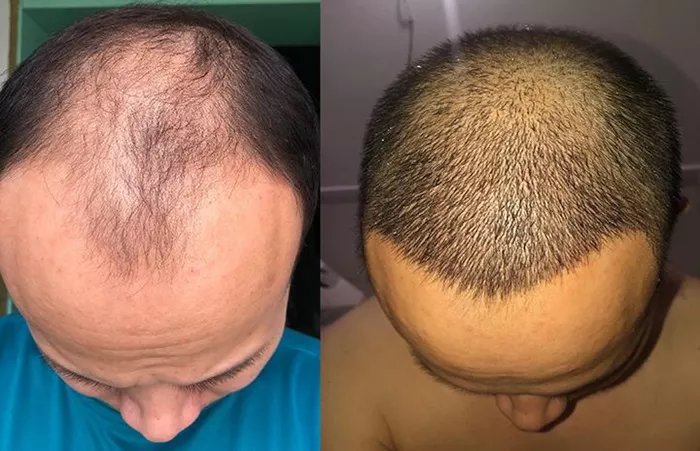A hair transplant is a surgical procedure. It involves moving hair follicles from one part of the body to the balding or thinning areas. Recovery time is essential for optimal results.
Initial Healing Phase
The first few days post-transplant are crucial. Your scalp may feel tender and swollen. Small scabs will form around the grafts. It’s important to avoid disturbing these areas.
First Two Weeks: Critical Care
During the first two weeks, follow your doctor’s care instructions. This period is critical for graft survival. Avoid any chemicals on your scalp, including hair dye. The follicles need time to settle and start healing.
Why Avoid Hair Dye Initially?
Hair dye contains chemicals that can irritate the scalp. Fresh grafts are vulnerable. Dye can cause inflammation or even infection. This can compromise the success of the transplant.
See also: Is a Hair Transplant Worth It?
Two to Four Weeks Post-Transplant
From the second to fourth week, your scalp continues to heal. You might notice some shedding of transplanted hair. This is normal and part of the process. Still, avoid dyeing your hair during this period.
One Month Mark: Assessing Healing
By the one-month mark, many people feel their scalp has healed significantly. However, the internal healing process continues. The hair follicles are still delicate. Consult your doctor before applying any chemicals.
Six to Eight Weeks: Increased Safety
At six to eight weeks, your scalp should be much better. Some doctors may give the green light for hair dye at this stage. It’s crucial to get a professional opinion. Everyone heals differently.
Why Six to Eight Weeks?
Hair follicles need time to establish themselves. By six to eight weeks, they are more stable. The risk of damaging the new grafts decreases. The scalp is less likely to react negatively to hair dye chemicals.
Choosing the Right Hair Dye
When you’re ready to dye your hair, choose a gentle product. Opt for dyes that are free from harsh chemicals. Consider using a semi-permanent dye first. These are generally less damaging than permanent dyes.
Patch Test is Crucial
Before dyeing your entire scalp, perform a patch test. Apply a small amount of dye to a small area. Wait 24-48 hours to check for any adverse reactions. This ensures your scalp can tolerate the product.
Professional Salon vs. Home Dyeing
Consider getting your hair dyed at a professional salon. Hairdressers can apply dye carefully, avoiding too much contact with the scalp. If you choose to dye at home, follow instructions meticulously.
Aftercare Post-Dyeing
After dyeing your hair, continue to follow good scalp care practices. Use mild shampoos and conditioners. Avoid excessive heat styling. Keep your scalp moisturized and healthy.
Possible Reactions to Look Out For
Even after waiting the recommended time, monitor your scalp. Look for signs of irritation, redness, or itching. If any adverse reactions occur, contact your doctor immediately.
Long-Term Care for Transplanted Hair
Taking care of your transplanted hair is an ongoing process. Avoid harsh treatments and chemicals as much as possible. Regular trims and gentle hair care products can help maintain healthy hair growth.
Maintaining Hair Color
Once you’ve dyed your hair, you might want to maintain the color. Use color-safe shampoos and conditioners. Avoid frequent washing, as it can strip the color. Touch up roots as needed, but with caution.
Consult Your Hair Transplant Surgeon
Always keep in touch with your hair transplant surgeon. They can provide personalized advice based on your healing progress. They might recommend specific products or practices to follow.
Patience is Key
Remember, patience is key in the hair transplant recovery process. Rushing to dye your hair can jeopardize your results. Allow your scalp and follicles ample time to heal properly.
Conclusion
Dyeing your hair after a hair transplant requires careful timing and consideration. Generally, waiting six to eight weeks is advisable. Always consult with your surgeon for personalized guidance. Choose gentle products and follow proper aftercare to ensure the best results for your newly transplanted hair.
FAQs
How long should I wait to color my hair after surgery?
You should wait at least six to eight weeks after your hair transplant surgery before coloring your hair. This waiting period allows your scalp and hair follicles to heal properly. Always consult your doctor before applying any chemicals to your hair to ensure the best results and avoid any potential complications.
Which hair dye is best after a hair transplant?
The best hair dye to use after a hair transplant is one that is gentle and free from harsh chemicals. Look for semi-permanent dyes or those specifically formulated for sensitive scalps. Natural and organic hair dyes can also be a good option. Always perform a patch test before applying the dye to your entire scalp.
How soon after a hair transplant can I use hair products?
You should wait at least two weeks before using any hair products on your scalp after a hair transplant. During the first two weeks, it’s crucial to avoid any potential irritants that could affect the healing process. After this period, you can gradually reintroduce mild, non-irritating products as recommended by your doctor.
How do I care for my scalp after a hair transplant?
Proper care for your scalp after a hair transplant includes:
Following your surgeon’s post-operative instructions.
Using mild shampoos and avoiding harsh chemicals.
Keeping the scalp clean and moisturized.
Avoiding direct sun exposure and wearing a hat when outdoors.
Being gentle with your scalp and avoiding scratching or picking at scabs.
What are the potential risks and side effects of a hair transplant?
Potential risks and side effects of a hair transplant include:
Infection or bleeding at the surgical site.
Scarring or keloid formation.
Swelling or redness of the scalp.
Temporary numbness or tingling.
Uneven hair growth or graft survival issues.
Shock loss of existing hair, which is usually temporary.
Always discuss potential risks with your surgeon before undergoing a hair transplant.
You May Be Interested In

